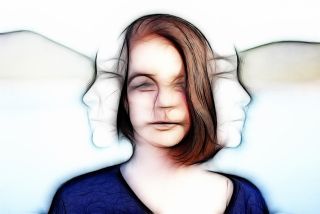Bipolar Disorder
Lifesaving Tips You Might Not Know About Bipolar Disorder
These ideas and tips on bipolar disorder can improve life.
Updated May 23, 2024 Reviewed by Lybi Ma
Key points
- In the past we had few bipolar treatments. Now we have many, and they're effective.
- With proper therapy and medication management, those living with bipolar disorder can survive and thrive.
- Knowing your triggers, being consistent, and prioritizing your care are key.

Therapists joke that if a client is bipolar, on the first visit you might have the urge to take them to lunch (even though you can’t). People with bipolar are generally charming, intelligent, creative, and warm. They’re loving and lovable. Bipolar artists are some of our most well-known creatives (think, Van Gogh). But bipolar can be fatal—and often was in the past. Gratefully, that’s no longer so true.
Those with a new diagnosis of bipolar may worry they won’t be able to continue their passions if they take medication. On the contrary, as Selena Gomez said about her diagnosis, “When I know more information it helps me. It doesn’t scare me… I felt a huge weight lifted off me when I found out.” Knowledge is power, and in that spirit, here are a dozen essentials to understand bipolar for yourself, a loved one, a colleague, or a friend.
- It’s treatable. Many brilliant minds have been lost to bipolar disorder—Sylvia Plath, Anne Sexton, Heath Ledger, Virginia Woolf, Ernest Hemingway, and countless more. Although some people avoid treatment or don’t know they have bipolar, the treatments we have are effective, minimize side effects, and encourage a fulfilling life.
- Bipolar is a spectrum. People diagnosed with bipolar disorder worry they might soon be directing traffic naked, or think they are Jesus. Only those at the far end of the bipolar spectrum (bipolar I), hallucinate or have delusions. This is known as psychosis, a feature of bipolar I mania at its most severe. Just as prevalent, but less well-known, is bipolar II, a form of the disorder without hallucinations or delusions.
- Bipolar II affects women more than men. Although “milder” in that it does not involve psychosis, bipolar II often takes longer to diagnose, and is just as debilitating. Those with bipolar II don’t experience mania, but rather hypomania, with the overactivity and expansiveness of mania but not psychosis. Unfortunately, those with bipolar II may spend up to 50 percent of their time depressed. In this way, bipolar II can be just as, or even more, disabling than bipolar I.
- Hormones exacerbate bipolar disorder. Bipolar II not only affects women more, but like any psychiatric disorder, it is exacerbated premenstrually, as well as during postpartum and menopause—times when hormones are in flux. Often, a woman will be diagnosed as bipolar following the birth of a child due to its hormonal, life, and sleep disruptions. Special attention during hormonal shifts is essential to ensuring health for all.
- Lifestyle measures and therapy help. In the days of Virginia Woolf, lifestyle measures—rest, stress reduction, adequate sleep, attention to nutrition—were the only treatments we had, and they worked, to a point. They still help. One therapy, for instance, called social rhythm therapy (not a dance step!) is particularly effective in identifying and decreasing bipolar triggers such as travel, late nights, alcohol, or skipping meals. Many psychotherapies—done with a therapist knowledgeable in bipolar—along with medications, improve bipolar outcomes. Therapy and medication together are more effective than either alone.
- Lithium helps prevent suicide. Lithium is still the only medication known to decrease suicidal behavior, but the drug has a bad reputation. When first introduced, and for many years after, it was the only medication we had for bipolar, and it was prescribed in high doses that often caused side effects, some of them irreversible. Now, we have many effective drugs to treat bipolar, so lithium can be used in low doses, decreasing its side effects but not its efficacy.
- Bipolar is highly inherited, and heritable. A client with bipolar almost always has a parent or ancestor who has (or had) it as well. This relative may not have been diagnosed, but bipolar hints remain. Was their behavior known to be erratic? Did they sometimes become grandiose, flamboyant, or unreliable? Did financial and or legal problems follow in their wake? These are a few bipolar clues. If there is no one in the family history with bipolar disorder, the diagnosis could be something else.]
- Untreated bipolar—save your brain from fire and destruction. Untreated bipolar, like any chronic illness, grows worse over time. Think of high blood pressure, diabetes, or heart disease—if untreated, they worsen and can be fatal. Bipolar is an organ disorder (in this case, the brain), just as these others are disorders of the blood vessels, pancreas, and heart, respectively. When people feel bipolar hypomania or mania, they may feel great (or even better) and think they no longer need medication. Think again. Every episode potentially worsens bipolar, damaging neurons in the brain. Lithium has been found to slow damage to neurons, and even decrease the incidence of Alzheimer’s disease. Medications help save brains and lives.
- Med myth: If you have bipolar, you can’t take SSRIs. Unfounded rumors often circle SSRIs, as they do lithium. It’s true that, for those with undiagnosed-untreated bipolar, SSRIs may precipitate a hypomanic or manic episode. But once a mood stabilizer is on board (like lithium, Lamictal, Depakote, Seroquel, or many others), people generally tolerate SSRIs well if needed for depression and or anxiety.
- Bipolar seldom visits alone. It’s not great, but probably no surprise: bipolar is often accompanied by other psychiatric disorders such as anxiety, substance use (connected with self-medicating), ADHD, or others. Treating bipolar can decrease symptoms of these other diagnoses, or they can be treated as well.
- People spend more time depressed. In bipolar II, but bipolar I as well, people spend more time depressed than hypomanic or manic. This is not fun. Bipolar II may be even more fatal than bipolar I. But don’t be disheartened: Bipolar II is usually easier to treat and manage than bipolar I, and a healthy and full life is accessible with bipolar disorder.
- You’re the best boss of you. There are many things we still don’t know about bipolar disorder—whether it’s I or II or even less common variants on the spectrum. But you know you. And a bipolar diagnosis can be empowering. It can explain past behaviors and open the door to treatment, healing, and mood management.

If you suspect bipolar but haven’t been diagnosed, an excellent screening tool is the Mood Disorder Questionnaire. It needs to be reviewed with a bipolar-conversant clinician, but you deserve that anyway: You are not alone.


